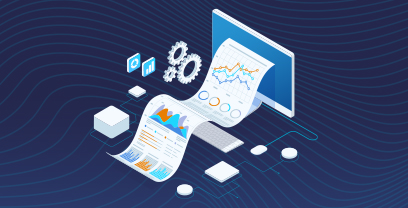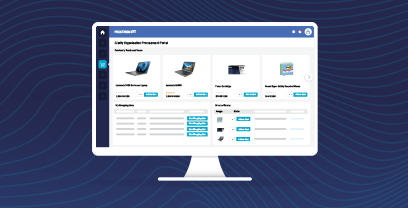For enterprise organizations, purchasing is a critical function that directly impacts budgets, compliance, and operational efficiency. But without the right tools, manual processes can lead to delays and overspending.
Purchasing software that automates manual tasks helps streamline approval workflows while supporting governance with reliable audit-ready reports. It eliminates the inconsistencies typical of paper-based methods and ensures all the boxes are checked before a purchase order (PO) is issued.
In this blog, we explain what purchasing software is, how it fits into the broader procurement landscape, and why it’s essential for procurement and finance teams. You’ll learn about key features, business benefits, and how companies like Maxim Healthcare are using Ivalua’s purchasing software to drive results.
Key Takeaways
- Purchasing software automates and governs the operational side of procurement, including requisitions, POs, approvals, and supplier management and collaboration.
- The right system reduces risk and increases visibility, helping finance and procurement teams enforce policies, control budgets, and make more informed decisions across regions and departments.
- Modern purchasing software supports long-term procurement transformation, enabling organizations to scale operations, improve cross-functional collaboration, and adapt to evolving business needs.
Pro Tip
Explore how purchasing software can streamline your procurement process. Find Out More
What Is Purchasing Software?
Purchasing software is part of a digital procurement solution that’s designed to automate and manage the entire buying process, from requisition to purchase order creation and management to supplier collaboration. It helps organizations streamline approvals, enforce policy, and improve spend visibility.
A robust procurement platform typically includes automated purchasing as a core component, ensuring seamless integration across the Source-to-Pay process.
How Purchasing Software Fits Into Procurement Management
Automated purchasing software plays a key role within the broader procurement ecosystem, but it’s important to understand where it fits.
While procurement software encompasses both strategic and operational activities, purchasing software focuses specifically on the execution layer, where approved buying happens.
- Purchasing software operates at the execution level, managing day-to-day tasks such as purchase requisitions, purchase orders, approvals, and supplier coordination.
- Procurement software covers both strategic and operational layers, including sourcing, contract management, supplier performance, and spend analysis.
Together, these two components support a unified Procure-to-Pay process that drives efficiency, compliance, and informed decision-making across the organization.
Why Purchasing Software Matters for Large Organizations
For enterprise organizations, purchasing is a critical control point for managing budgets. The function is responsible for ensuring compliance and coordinating spend across business units, regions, and teams.
Manual or disconnected purchasing processes introduce risk and reduce transparency, making it nearly impossible to enforce policies consistently. This is especially true as an organization grows and expands its purchasing function.
Without a reliable purchasing system in place, you’re at risk of experiencing:
- Delayed approvals and reactive purchasing, leading to missed opportunities, rushed decisions, or poor supplier terms
- Inconsistent vendor use and contract noncompliance, which undermines negotiated savings and creates audit risk
- Budget misalignment and untracked commitments are making it difficult to forecast spend or control cost overruns
- Duplicate or mismatched invoices, leading to a risk of payment errors, disputes, and strained supplier relationships
- No single view of procurement activity, which limits insight into spending patterns, compliance gaps, and process inefficiencies.
Purchasing software addresses these challenges by standardizing workflows and giving finance and procurement leaders the visibility and tools they need to control spend, without slowing down the business.
Core Features of Purchasing Software
Automated purchasing software brings structure, speed, and control to a process that can quickly become chaotic at scale without the right tools. In large organizations, core features like vendor portals must go beyond task automation – they need to enforce policy, align with finance, and support compliance across the business.
Now, let’s examine some of the other critical capabilities you should expect from a robust cloud-based purchasing software solution.
Requisition Management and Automated Approvals
An automated purchasing solution starts with structured intake. Ivalua’s intake management feature allows teams to trigger configurable approval workflows with role-based routing, built-in budget tracking, and escalation paths, ensuring the right requests are approved by the right people, at the right time.
Purchase Order Creation and Tracking
Once a requisition is approved, it can be seamlessly converted into a purchase order. With Ivalua’s Invoice-to-Pay capabilities and mobile access, teams can track PO status in real time, sync with suppliers, and centralize order data, reducing errors and improving visibility into order fulfillment from anywhere.
Supplier Data and Contract Alignment
To ensure compliance and implement cost reduction strategies, purchasing software must connect requests and orders to vetted suppliers and enforce terms from approved agreements. Ivalua’s contract lifecycle management software ties purchases to the right vendors, using the right pricing and conditions every time.
Spend Visibility and Procurement Analytics
With built-in spend analysis, Ivalua helps organizations monitor real-time spend, category performance, and savings across departments. This enables proactive decision-making and supports continuous improvement.
ERP and Finance System Integration
Automated purchasing doesn’t happen in a vacuum. Ivalua’s multi-ERP integration connects purchasing activity directly with enterprise resource planning and finance systems, ensuring accuracy across budgeting, reporting, and payment processes.
By implementing these capabilities, teams benefit from an intelligent purchasing process that is consistent and compliant, and can grow over time to meet the evolving needs of your business.
Benefits of Purchasing Software for Procurement and Finance Teams
Purchasing software delivers measurable value to procurement and finance teams. As part of a unified procurement platform, they provide control over spend, operational efficiency, stronger governance, and smoother cross-functional collaboration.
In this section we take a deeper look at the benefits automated purchasing software brings to procurement and finance teams.
Reduced Maverick Spend and Off-contract Purchases
Purchasing software routes every request through approved workflows and supplier agreements, helping enforce sourcing policies and prevent unauthorized buying that leads to hidden costs and compliance gaps.
Faster Requisition-to-PO Cycle Times
Automation accelerates the entire process of converting requisitions to purchase orders by eliminating manual bottlenecks, routing approvals based on business rules, and allowing teams to fulfill purchasing needs quickly without sacrificing control.
Centralized Audit Trails
Every step of the purchasing process is captured – from requisition to PO changes – giving finance and compliance teams full visibility for audits, internal reviews, and real-time reporting.
Increased Forecasting Accuracy
By aligning purchase requests with budgets and integrating with financial planning tools, purchasing software gives finance teams a clearer picture of committed spend, enabling more accurate forecasts and better cash flow management.
Consistent Policy Enforcement Across Regions
Standardized rules and automated workflows ensure that purchasing practices meet global requirements, while allowing flexibility for local teams. This makes it easier to manage compliance and remain agile and responsive to market demands.
Together, these benefits help enterprise organizations build a smarter, more transparent purchasing function.
Customer Story: How Maxim Healthcare Achieved Rapid Digital Transformation in Procurement
After seven years with a previous Procure-to-Pay (P2P) provider, Maxim Healthcare was still struggling with low supplier adoption and heavy manual processes. Only 15 suppliers had been onboarded, and 80% of invoice processing was done manually. These inefficiencies led Maxim to seek a more effective, scalable solution that could deliver faster results and improve spend control.
With Ivalua, Maxim went live with their new Procure-to-Pay (P2P) solution in just eight weeks and onboarded more suppliers during that time than they had in the previous seven years. And within weeks, they enabled 1,118 users, made 2,162 catalog items available, and launched hosted catalogs from 10 suppliers.
How did they do it? By leveraging Ivalua’s no-fee supplier model, flexible and user-friendly interface, and guided buying capabilities – all of which improved control and compliance.
“Our users went right into the system with only a few training guides. Our team believes they didn’t even need to use the guides because the system was that easy to navigate.” -Cindy Seabrease Director of Purchasing and Accounts Payable, Maxim Healthcare
Read the full Maxim case study to see how Maxim achieved Procure-to-Pay implementation in just 8 weeks.
It Pays to Get Purchasing Right
Purchasing software is essential for helping large organizations manage spend, enforce policies, and streamline the buying process from request to fulfillment. As part of a connected procurement platform, it brings structure to everyday purchasing while supporting broader goals like faster supplier onboarding, better collaboration, and increased financial control.
With Ivalua, enterprise teams gain the tools they need to simplify operations, and build a more effective and compliant procurement process.
See How Ivalua’s Purchasing Software Helps Enterprise Teams Streamline Workflows And Control Spend
FAQs
Not exactly. Purchasing software focuses on the operational side of procurement, such as requisitions, purchase orders, and approvals. Procurement software includes purchasing functions and also supports strategic sourcing, contract management, and supplier performance.
Yes. Most enterprise-grade purchasing software is designed to integrate seamlessly with ERP and financial systems. This ensures accurate data flow between purchasing, budgeting, and payment processes. Learn about Ivalua’s multi-ERP integrations.
Purchasing software is used by procurement teams, department managers, finance staff, and anyone responsible for initiating or approving purchases. It also supports supplier engagement and collaboration where needed.
Purchasing software enforces company policies through built-in approval workflows, pre-approved supplier catalogs, and budget tracking. Every step is checked, creating a clear audit trail for finance and regulatory teams.
Yes, advanced purchasing systems support multi-level approvals, regional workflows, and localized business rules. This ensures consistency and control across global operations while allowing local flexibility.
















